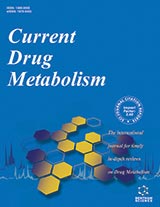摘要
肥胖是导致非酒精性脂肪肝(NAFLD)形成的主要危险因素。NAFLD是全球最常见的慢性肝脏疾病,它代表了一系列从脂肪变性(NAFL)到非酒精脂肪性肝炎(NASH)以及肝硬化 的疾病。据估计,NAFLD引起的肝移植将很快超过慢性丙型肝炎感染所引起的肝移植。除了其临床和公共卫生意义,对NAFLD并没有具体的治疗方法。虽然非酒精性脂肪肝的病因是多方面的,在很大程度上仍然是未知的,但炎症是公认的导致NAFLD发病的一个重要原因。尽管具有重要意义,关键的免疫介质、免疫激活位点、免疫信号转导通路和导致疾病进展的机制仍然不是十分清楚。最近的研究都聚焦于促炎细胞因子家族白细胞介素17(IL-17)在肥胖和肥胖相关后遗症的发病机制中所起的作用。值得注意的是,肥胖促使Th17不同,并且人类和小鼠肥胖与IL-17A表达增加有关。此外,在小鼠中,IL-17axis 被用于调节肥胖和非酒精性脂肪肝病的发病机制。然而,尽管研究取得了巨大的进展,但IL-17A产生的相关细胞来源、关键的IL - 17ra表达细胞类型、浸润免疫细胞的肝脏及其潜在的细胞效应机制需要进一步研究。解决这些问题将有助于预防炎症所致的NAFLD的新型治疗靶点的识别和开发。
关键词: IL-17
图形摘要
Current Drug Targets
Title:IL-17 Axis Driven Inflammation in Non-Alcoholic Fatty Liver Disease Progression
Volume: 16 Issue: 12
Author(s): Daniel A Giles, Maria E Moreno-Fernandez and Senad Divanovic
Affiliation:
关键词: IL-17
摘要: Obesity is a primary risk factor for the development of non-alcoholic fatty liver disease (NAFLD). NAFLD, the most common chronic liver disease in the world, represents a spectrum of disorders that range from steatosis (NAFL) to steatohepatitis (NASH) to cirrhosis. It is anticipated that NAFLD will soon surpass chronic hepatitis C infection as the leading cause for needing liver transplantation. Despite its clinical and public health significance no specific therapies are available. Although the etiology of NAFLD is multifactorial and remains largely enigmatic, it is well accepted that inflammation is a central component of NAFLD pathogenesis. Despite the significance, critical immune mediators, loci of immune activation, the immune signaling pathways and the mechanism(s) underlying disease progression remain incompletely understood. Recent findings have focused on the role of Interleukin 17 (IL-17) family of proinflammatory cytokines in obesity and pathogenesis of obesity-associated sequelae. Notably, obesity favors a Th17 bias and is associated with increased IL-17A expression in both humans and mice. Further, in mice, IL-17 axis has been implicated in regulation of both obesity and NAFLD pathogenesis. However, despite these recent advances several important questions require further evaluation including: the relevant cellular source of IL-17A production; the critical IL- 17RA-expressing cell type; the critical liver infiltrating immune cells; and the underlying cellular effector mechanisms. Addressing these questions may aid in the identification and development of novel therapeutic targets for prevention of inflammation- driven NAFLD progression.
Export Options
About this article
Cite this article as:
Daniel A Giles, Maria E Moreno-Fernandez and Senad Divanovic , IL-17 Axis Driven Inflammation in Non-Alcoholic Fatty Liver Disease Progression, Current Drug Targets 2015; 16 (12) . https://dx.doi.org/10.2174/1389450116666150531153627
| DOI https://dx.doi.org/10.2174/1389450116666150531153627 |
Print ISSN 1389-4501 |
| Publisher Name Bentham Science Publisher |
Online ISSN 1873-5592 |
Related Books
 82
82 2
2 1
1 1
1
- Author Guidelines
- Bentham Author Support Services (BASS)
- Graphical Abstracts
- Fabricating and Stating False Information
- Research Misconduct
- Post Publication Discussions and Corrections
- Publishing Ethics and Rectitude
- Increase Visibility of Your Article
- Archiving Policies
- Peer Review Workflow
- Order Your Article Before Print
- Promote Your Article
- Manuscript Transfer Facility
- Editorial Policies
- Allegations from Whistleblowers
Related Articles
-
Early Growth Response-1 (EGR-1) – A Key player in Myocardial Cell Injury
Cardiovascular & Hematological Agents in Medicinal Chemistry Midkine in Inflammatory and Toxic Conditions
Current Drug Delivery Recent Evidence of the Regulatory Role of PPARs in Neural Stem Cells and Their Underlying Mechanisms for Neuroprotective Effects
Current Stem Cell Research & Therapy Matrix Metalloproteinase Inhibitors: New Challenges in the Era of Post Broad-Spectrum Inhibitors
Current Pharmaceutical Design Reduction in Ischemic Cerebral Infarction is Mediated through Golgi Phosphoprotein 3 and Akt/mTOR Signaling Following Salvianolate Administration
Current Neurovascular Research Resveratrol, a Molecule with Anti-Inflammatory and Anti-Cancer Activities: Natural Product to Chemical Synthesis
Current Medicinal Chemistry Natural Phenolic Compounds as Cardiovascular Therapeutics: Potential Role of their Antiinflammatory Effects
Current Vascular Pharmacology The Cardiovascular Nutrapharmacology of Resveratrol: Pharmacokinetics, Molecular Mechanisms and Therapeutic Potential
Current Medicinal Chemistry Acute Effects of Neutrophil-Derived Oxidative Stress on Pulmonary Microvasculature
Current Respiratory Medicine Reviews Regulation of Xanthine Oxidase Activity by Substrates at Active Sites via Cooperative Interactions between Catalytic Subunits: Implication to Drug Pharmacokinetics
Current Medicinal Chemistry Impact of COX-2 Inhibitors in Common Clinical Practice a Gastroenterologists Perspective
Current Topics in Medicinal Chemistry The Significance of Endothelium-Derived Hyperpolarizing Factor in the Human Circulation
Current Vascular Pharmacology Platelets and Atherothrombosis: Causes, Targets and Treatments for Thrombosis
Current Medicinal Chemistry Contrast Functions of αA- and αB-Crystallins in Cancer Development
Current Molecular Medicine Potential Therapeutics for Vascular Cognitive Impairment and Dementia
Current Neuropharmacology Protective Effects of Intermedin On Cardiovascular, Pulmonary and Renal Diseases: Comparison with Adrenomedullin and CGRP
Current Protein & Peptide Science Matrix Metalloproteinase Knockout Studies and the Potential Use of Matrix Metalloproteinase Inhibitors in the Rheumatic Diseases
Current Drug Targets - Inflammation & Allergy Recombinant Human Insulin-Like Growth Factor-1: A New Cardiovascular Disease Treatment Option?
Cardiovascular & Hematological Agents in Medicinal Chemistry Thrombolysis in Ischemic Stroke: Focus on New Treatment Strategies
Recent Patents on Cardiovascular Drug Discovery Recent Trends in the Pharmacological Activity of Isoprenyl Phenolics
Current Medicinal Chemistry


























